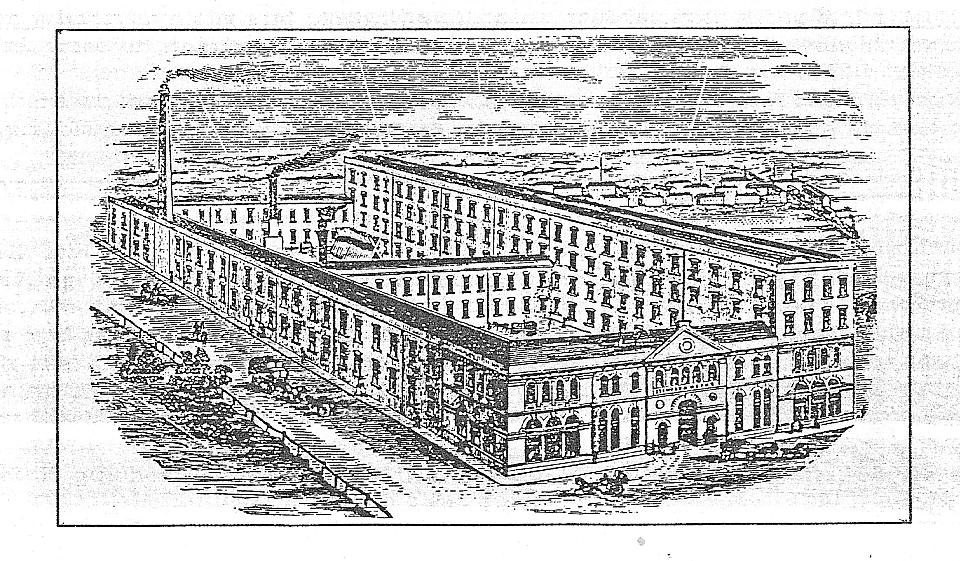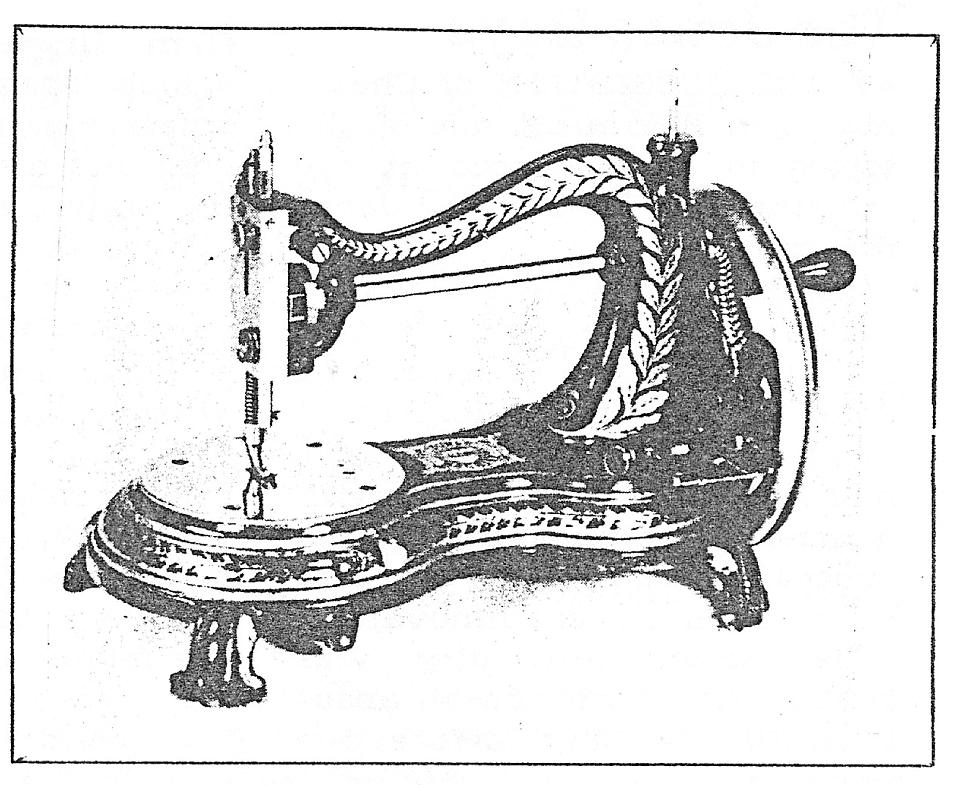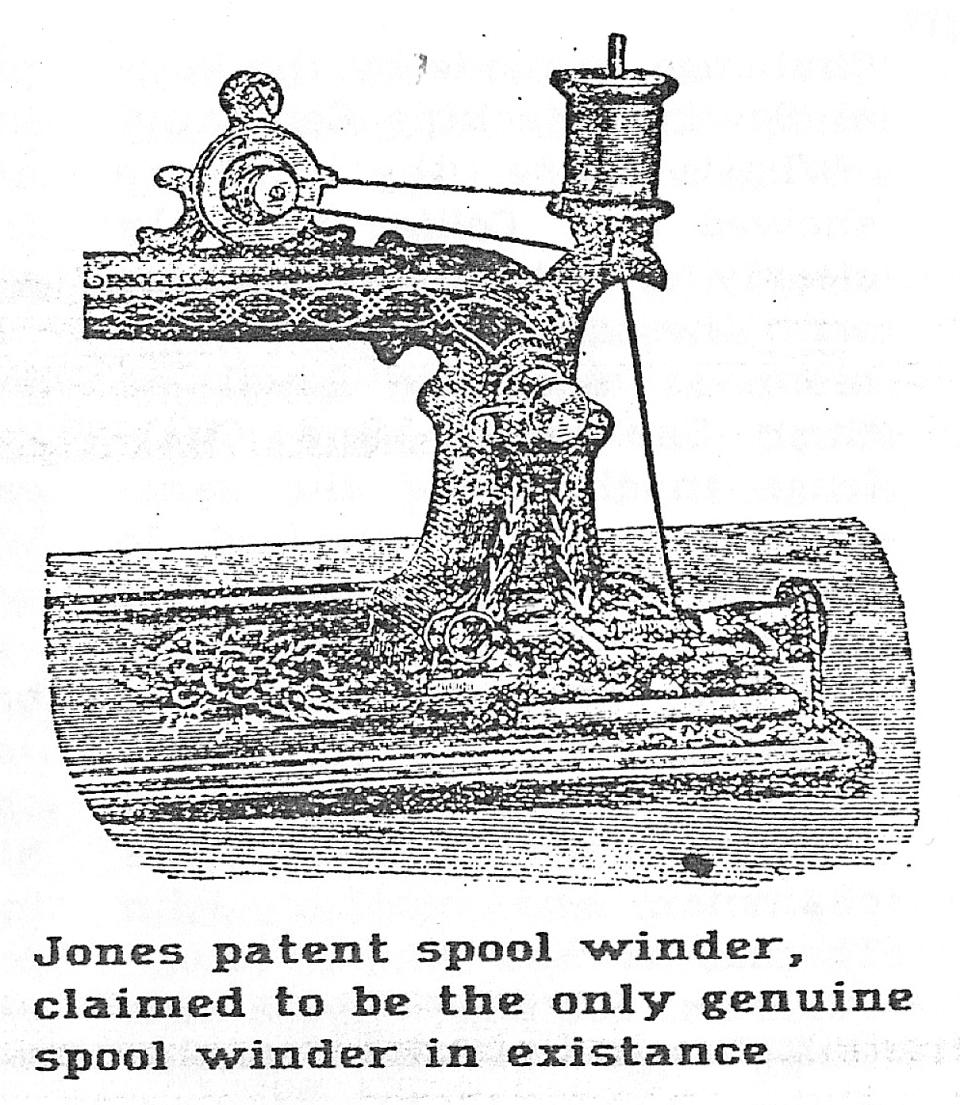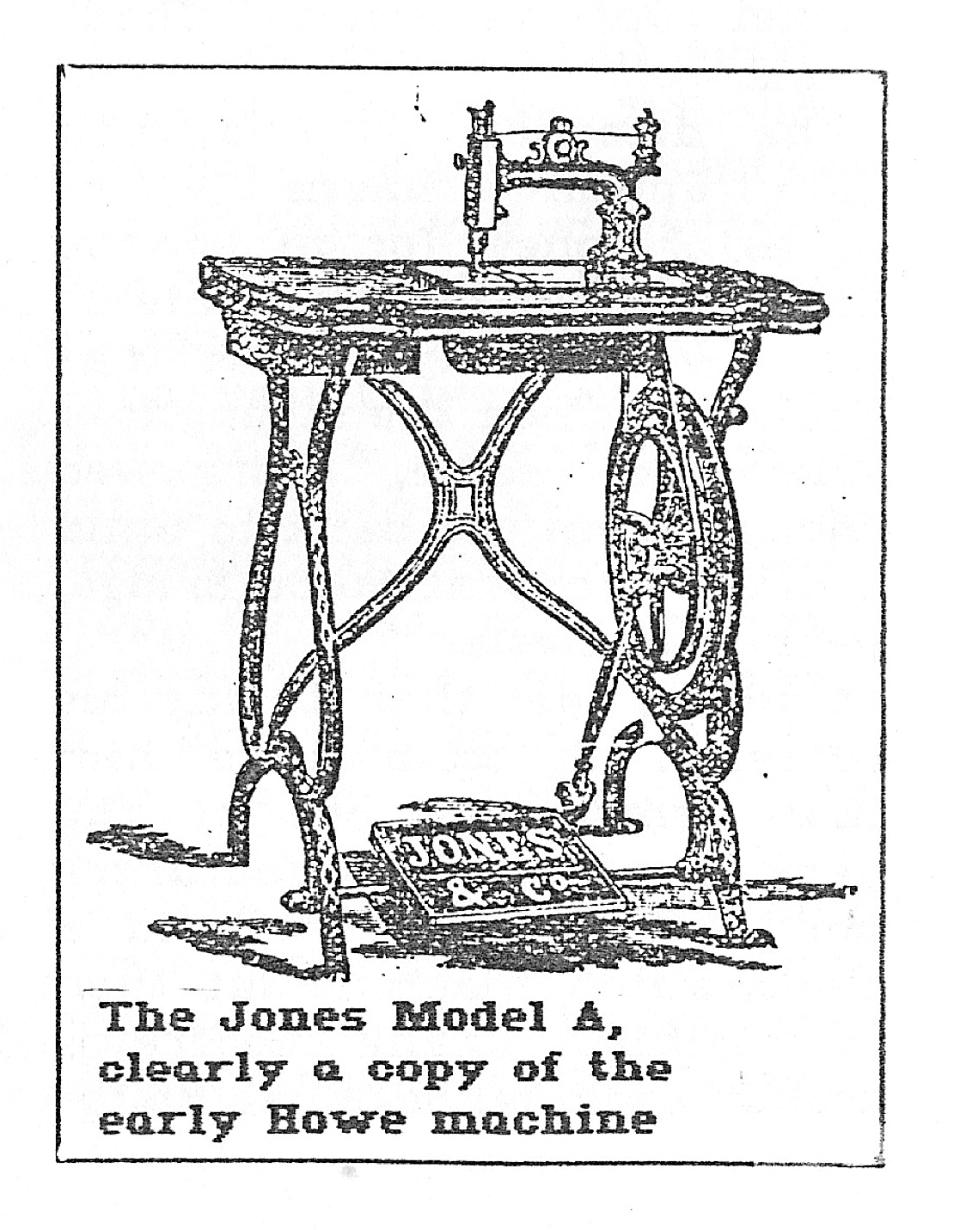The Jones Boys
This information is a reprint from a past issue of ISMACS News. It is from a brief lecture by Graham Forsdyke on the history of the Jones Company.
The pictures are taken from a scan of ISMACS News 15
AT THE SUGGESTION of Chairman Len Hemming, one of the topics to be discussed at the meeting was that of the Jones machine.
Graham Forsdyke started by stating that he had hit two difficulties in researching Jones -- the more important being that the manufacturer had a very small range of domestic machines, and whilst successful in the market, had never been a great innovator.
The second difficulty was that he had forgotten all about it until the day before the meeting.
Graham was able to tell us that William Jones was the owner of a small engineering firm in Audenshaw, Loncs, which specialised in making small steam engines for the domestic market -- for pumping water, etc.
Jones first got interested in sewing machines in the later part of 1858, having got ahold of a Howe, and a Wheeler & Wilson, which he promptly took to pieces to find out how they worked and, more importantly, just how they could be improved.

Jones Sewing Machine Factory
He started manufacture the following year, after having been granted a patent for improvements to Howe's long-shuttle machine. Graham guessed that from the scale of the operation, Jones was one of the few manufacturers of the time who actually had official license to produce Howe, and Wheeler and Wilson clones.
This first license, and some of the 14 that followed it, were taken out in the name of William's brother John Thomas Jones, although William put his name to others himself.

For a short time Jones was in partnership with one of the other great names of the early British sewing machine industry -- Thomas Chadwick.
Chadwick was a young militant who worked at the Platt Brothers engineering company in Oldham, and one of the ringleaders in a strike in 1852, which developed into the entire workforce being locked out by the management. This experience appeared to convert Chadwick into a would-be boss, for in 1860 he got together with a group of businessmen to set up his own sewing-machine manufacturing company in Oldham. Things did not go well and when Chadwick found, as Graham put it, his partners knew as much about sewing machines as they did video recorders, he bought them out and traveled to Audenshaw to do a deal with the Jones management.
The result was a partnership and a new factory at Ashton-under-Lyne. It was probably an equal partnership, for the new company that resulted from the meeting, and was formed in 1860, was called Chadwick and Jones.
Although this partnership existed only three years, Graham argued that it was quite possible that machines labeled Chadwick and Jones did exist, but neither he nor the members present knew of any examples.

The Chadwick/Jones partnership dissolved when Jones' great rival, Bradbury, poached Chadwick away to join his own company. Chadwick stayed with his new employer until his death in 1885 when he was chairman and managing director of the company.
It may not only have been a higher salary that tempted Chadwick away from Jones, for Bradbury was an old friend who had also been locked out of the Platt company and had stood picket duty alongside Chadwick.
The defection of Chadwick didn't appear to harm the fortunes of Jones, for in 1869 he had taken out his first patent for the company's own machines, and on the strength of sales to come, borrowed enough from the bank to build a new factory at Guide Bridge, near Manchester. Graham said that during his research it occurred to him that Jones was one of the very few large manufacturers not to have ever produced a chain-stitch machine. But then, in member Frank Godfrey's book: "An International History of the Sewing Machine" he found a reference and a photograph which seemed to contradict his theory.
The book stated that William Jones of Manchester, in 1870 made a special machine for Collier, the large, Peckham, South London dealer, to be marketed under the Collier name and that his was indeed a chain stitch. That would have been all very well --except for the picture that went with the test. The photograph certainly showed a very fine condition machine with the name Collier clearly visible, but the model was clearly a re-named Challenge as made by the Royal Sewing Machine Company. What's more, the picture showed the Collier to be be clearly a lock-stitch machine with the same shuttle mechanism, as used by Royal on their Shakespeare and Challenge machines of the same period. Graham promised to contact Frank in an attempt to unravel the mystery. (This was revealed to be an error in the book)
At the same time that the new factory was built, the business became a limited company with William as chairman and brother John Thomas as managing director.
Graham could not give a date when the famous fiddle-based hand machine which forms the starting point of many sewing-machine collections, was dropped from the company's model range, though Bernard Williams said specially-decorated examples were given away during a soap promotion during 1906. Graham said that it would have been well before the firm stopped production shortly after the outbreak of the Second World War.(Later research reveals that the fiddle-based machine was removed from the catalogue in the 1880's, but that batch production for special clients continued into the 20th century)
In 1958 the Japanese Brother company took over the Jones business and built a new factory just across the street from the Guide Bridge building where Jones' fortunes had been made. The new group produced complete machines in the new premises, and also assembled other models from parts manufactured abroad.
Brother Industries are quite proud of the fact that in their museum they have one of the early Jones-made Wheeler and Wilson machines in perfect working order.
Answering questions, Graham said that none of the Jones patents were of world-shattering importance in the history of the sewing-machine industry, and added that probably the most lucrative was for the positioning of the feed-reversing switch at the operator's right hand on industrial models.

Wakefield member Mary Buckroyd added that she remembered well, using the lever which was placed perfectly for fast production work. Other information that came to light during the discussion that followed was that, like Singer, the Jones company had set up its own shops in major towns to promote its products, and an interesting aside came from trade member Henry Cade who was able to reveal that, even in pre-war years, many of the Singer shops in smaller towns were franchised out to private individuals -- surely the first of the big franchise operations?
Graham ended the Jones discussion with an amusing anecdote found during his research.
It seems that in 1855 the Jones company got very upset with the editor of the Journal of Domestic Appliances. The magazine had run a feature on the sewing-machine trade in which the Jones shoe and boot machines were mentioned.
Rather than a letter of thanks, Jones wrote to the editor complaining that the journal had dared to mention his company without express permission, and what's more accused the writer of giving the impression that the Jones business dealt only with the footwear trade.
Jones went on to tell of the vast range of industrial and domestic machines produced, and finished up his tirade with the put-down that his business produced more machines than all the other English manufacturers put together.
Graham thought the editor quite tactful in simply reproducing the complaint and not commenting on the fact that it was noteworthy that Jones had said ENGLISH manufacturers, thus carefully avoiding Mr. Singer's little plant up in Scotland that was then outselling everyone.
Maggie Snell -- ISMACS Secretary






